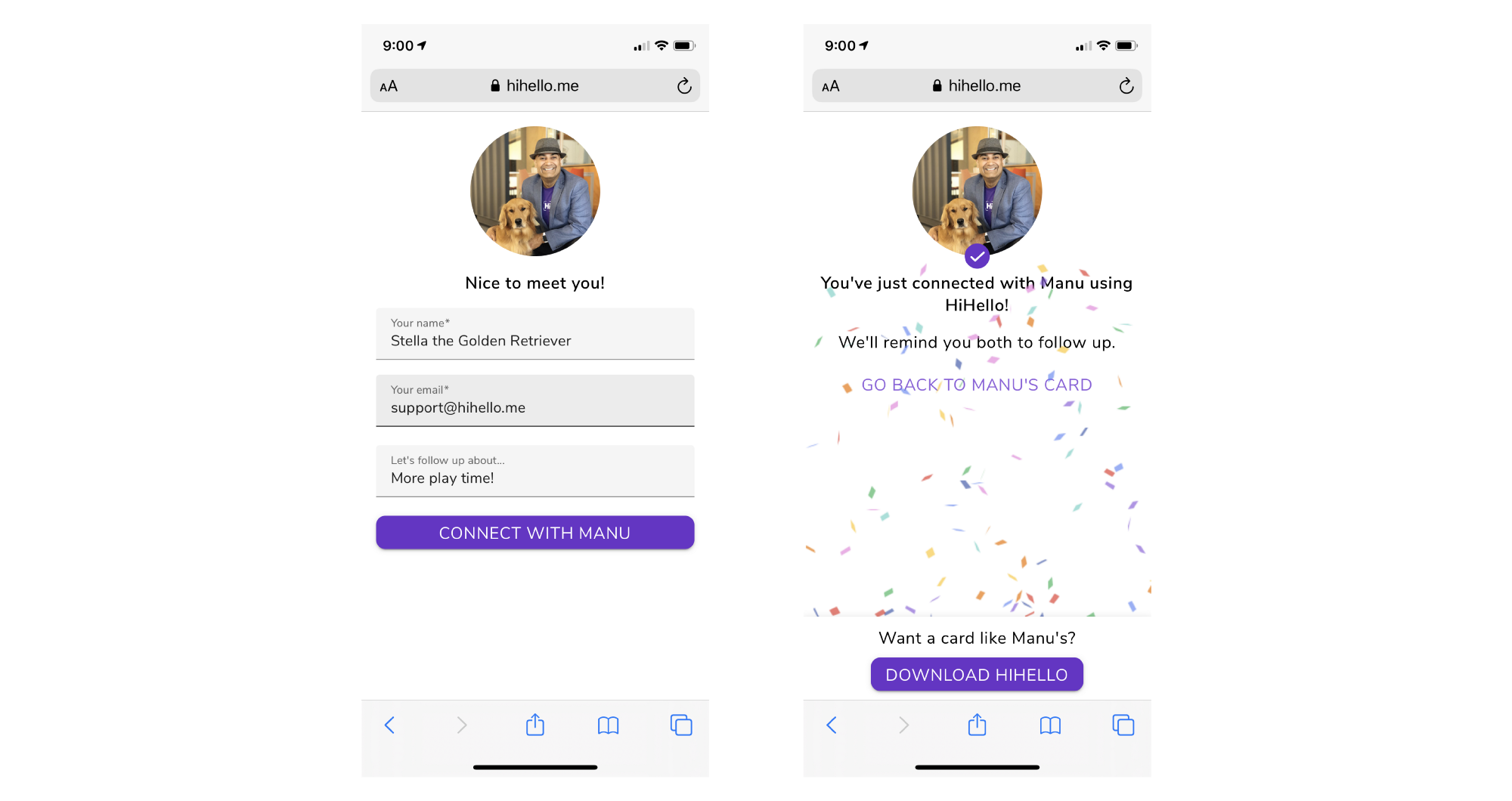
When we first started developing HiHello, we wanted to make the simplest way for two people to exchange information with each other. It just bothered me that with every single person carrying a smartphone in their pocket that there was no easy way to do this.
Paper business cards have been around for hundreds of years. Why is it that even today, we take contact information that wants to live in the digital realm, print it out on a piece of paper, aka a dead tree, and then hand it to somebody so that they can then go through the arduous task on converting it back into digital form? That’s a digital to analog to digital conversion, for no good reason. There has to be a better way.
With the HiHello alpha app (<100 people had access to this version) we made it possible to scan a HiHello QR code and the experience on the iPhone was that it would directly open up the Contacts app and allow the recipient to save the contact. But then we started realizing the limitations of this approach:
Bottomline was that we had little to no control over the experience of saving the contact. That was dictated by what Apple allowed on iOS and what every device manufacturer allowed on Android leading to an inconsistent user experience.
We therefore made the decision to drive users to a “web card” instead of directly to a contact so that the card information would be viewable and usable right away. We still allowed people to save the contact into their address book and spent a lot of time and effort trying to make this process smoother. But alas, as mentioned in the last point above, we didn’t have control over this process and it always felt very clunky and broken.
I had gone to an event and was introduced to someone who I had not met before. We chatted for a while, and exchanged contact information using HiHello — I showed the person my HiHello code, and he was able to see my web card, and save my contact information to the contacts on his phone. After continuing to chat for several minutes, when we finally were about to leave each others company this person asked me: “So remind me what your name is, so that I can find you in my contacts?”
That simple question hit me like a ton of bricks. It made me realize that adding someone into your address book is not sufficient! If our goal is to ensure that people are able to connect with each other following the initial meeting, then we need to do more. We need to ensure that both parties have something in their workflow that makes it easy for them to follow up with each other. It is that simple act of following up that will help to turn that handshake into a relationship.
That was the epiphany that made us go back to the drawing board and revisit how we were enabling people to connect using HiHello.
Getting to the right solution has required a lot of iteration. A lot of small changes to get the experience just right. As part of this process I was inspired by the episode of Masters of Scale, which talks about “Small Changes for Big Impact” as that is exactly the process we were going through.
In our new ‘closing the loop’ flow, we have prioritized making sure that everyone using HiHello has a consistent and smooth experience that makes it easy to connect with each other at the initial meeting and then be able to follow-up with each other afterwards. And most importantly we make sure that we get into both users' workflows.
Now, when someone scans a HiHello code, they are immediately taken to a beautiful web card. This card shows a nice big image of the person, the company’s logo, a headline, and all of their contact information. All of the information is live, and actionable right there from the web card.

In order to ‘close the loop’ and exchange information, the recipient simply taps on the “+ / Connect” button and is prompted to enter only their name and email (and an optional message/reminder).

Once they submit this information HiHello then emails each person. The sender receives the name and email of the person they just met in their inbox, and the receiver received the full contact card of the sender in their email with all the information included in the text of the email as well as as a contact (as an attachment) for them to be able to save on their phone or desktop.

The big realization from months of iteration on the process is that it was important to get into people’s workflow. And for most business professionals, email is still the dominant way to get into their workflow.
The new approach to connecting on HiHello makes the experience very simple and smooth. We’ve been testing (and continuing to iterate) on this approach for several weeks and it’s been working amazingly well.

If you’ve used HiHello before, we’d encourage you to try the new experience and let us know what you think. We welcome your feedback as that’s what helps us to get better. You can email us at feedback@hihello.me or leave us a comment on our Contact Us page.